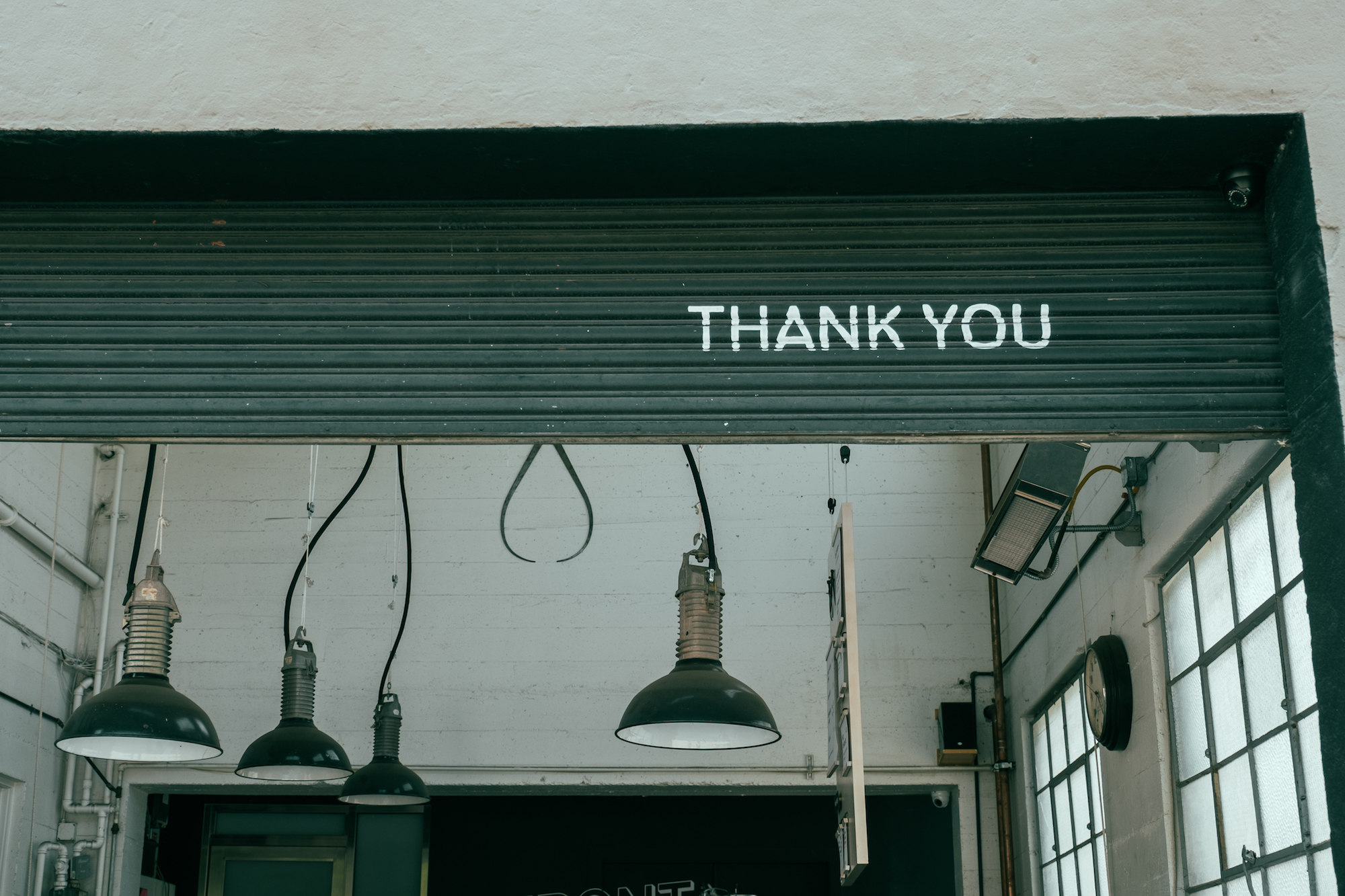This year, forget the generic, corporate Facebook post about gratitude, and send a “thank you” that actually works.
This Thursday, it’ll be Thanksgiving in the US.
Around this time every year, a lot of companies try to capitalize on the spirit of the holiday.
They post some trite, generic message to their Facebook page about how they appreciate all of us.

Most of the time, this is the only whiff of appreciation that customers feel from many of these companies.
And that’s a problem.
“Thank you” is one of the most powerful, game-changing phrases in business (and life), and we’re wasting it on bullshit.
This week, I’m challenging all of us to do better.
The Massive Psychological Power of “Thank You”
Dale Carnegie, in How to Win Friends and Influence People, praised appreciation as food for the soul:
In our interpersonal relations we should never forget that all our associates are human beings and hunger for appreciation. It is the legal tender that all souls enjoy.
It’s a haunting phrase that’s stuck with me since the first time I read it.
But the power of a real thank you goes way beyond making someone else feel good.
That power was tested in a 2010 study by researchers from the Universities of Pennsylvania and North Carolina, when behavioral scientists Francesca Gino and Adam Grant set out to see what the impact of receiving gratitude can be on someone’s behavior.
In the study, participants were asked to give feedback on a fictional student’s (“Eric”) cover letter.
After the feedback was received, the participants got a reply asking for feedback on a second cover letter.
This is where things get interesting.
Half of the participants got a straight, to-the-point email with the second request, and the other half got an email expressing gratitude for completing the first review.
Here are the actual emails that were used:

The results?
32% of the “No Gratitude” group provided feedback on the second cover letter, while 66% of the “Gratitude” group — more than double — sent more feedback.
That’s not a small difference.
But the researchers took it a step further.
The day after completing the study (or so they thought), participants got yet another request for help. This time, from a different fictional student (“Steven”).

What happened was fascinating: 25% of the original “No Gratitude” group offered to help Steven, while 55% — again, more than double — of the original “Gratitude” group offered to help.
Remember, they had never heard of Steven before: the effects of receiving gratitude carried over and still made them more likely to help the following day.
Receiving gratitude doesn’t just change the way we think and feel; it changes the way we behave for the better.
In business, appreciation can help you build deeper relationships with your customers, and make them more likely to do what you ask of them, whether that means staying with you, buying more or referring others.
Appreciation is a powerful tool in any interaction, as long as it’s genuine.
But do not cheapen it with lame “corporate” thank-you’s.
A Thanksgiving Challenge: Harness the Power of (Real) Gratitude
This week, don’t just send a mass email or post a Thanksgiving meme to your company’s Facebook page.
Take the time to send each customer a sincere, personal thank you that shows them why you’re grateful for their business.

And if you have thousands of customers and can’t make time to do it for all of them this week, that’s okay; just get started with a handful and pick up where you left off next week. And the week after that. Keep going until you’ve reached out to every single customer.
“Thank you’s” are too important — and too powerful — to confine to one holiday.
Next week, when every other company has forgotten about the power of gratitude… you won’t.
And neither will your customers.





